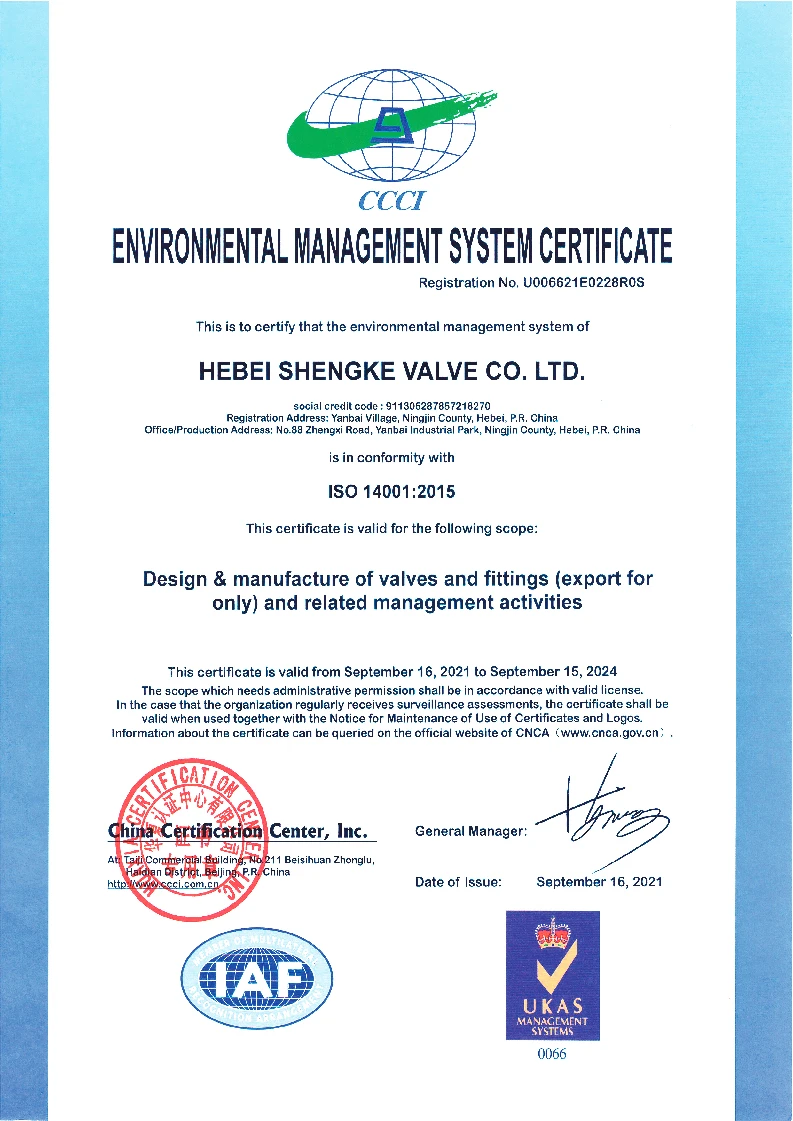ធ្នូ . 31, 2024 08:10 Back to list
actuated valve
Understanding Actuated Valves Function, Types, and Applications
Actuated valves are critical components in various industrial processes, playing a pivotal role in controlling fluid flow. These valves are equipped with an actuator, which is a device that converts electrical, hydraulic, or pneumatic energy into mechanical motion. This mechanism enables automated control of the valve, allowing for precise adjustments in flow, pressure, and temperature. Understanding the function, types, and applications of actuated valves is essential for optimizing system performance and ensuring operational efficiency.
Function of Actuated Valves
The primary function of actuated valves is to regulate the flow of fluids in piping systems. By opening or closing the valve, the actuator controls the amount and direction of fluid passing through. This regulation is crucial in processes where safety, efficiency, and reliability are paramount. For instance, in a chemical processing plant, an actuated valve can automatically shut off the flow in the event of a leak, thereby preventing accidents and minimizing environmental impact.
The automation of valve operations enhances the overall control of a system. Operators can remotely monitor and adjust the valves through control systems, often using sophisticated software that integrates with supervisory control and data acquisition (SCADA) systems. This remote capability reduces the need for manual intervention, which can be dangerous and time-consuming.
Types of Actuated Valves
Actuated valves come in various types, each designed for specific applications and operating conditions. The most common types of actuated valves include
1. Ball Valves These valves use a spherical obstruction (the ball) to regulate flow. When the ball is rotated, it either allows or blocks fluid passage. Ball valves are known for their durability and ability to handle high pressures and temperatures.
2. Butterfly Valves Featuring a rotating disc that opens and closes to control flow, butterfly valves are lightweight and compact. They are often used in applications where space is limited and quick operation is essential.
3. Globe Valves These valves have a spherical body and are designed for throttling flow rather than just stopping it. They are ideal for controlling flow rates in pipelines.
4. Check Valves These are non-return valves that allow fluid to flow in one direction while preventing backflow. They are crucial in systems where backflow could cause problems or safety hazards.
actuated valve

5. Solenoid Valves These valves are operated electrically and are ideal for precise control in applications involving small flow rates. They are commonly used in irrigation systems and fuel lines.
Applications of Actuated Valves
Actuated valves have a wide range of applications across various industries, including
- Oil and Gas These valves regulate the flow of crude oil, natural gas, and other petroleum products in refineries, pipelines, and processing facilities.
- Water and Wastewater Treatment In these systems, actuated valves control the flow of water through treatment plants, ensuring efficient processing and distribution.
- Chemical Manufacturing Actuated valves are used to control the mixing of chemicals and the flow of substances within reactors, ensuring safety and precision in chemical processes.
- Food and Beverage In the food industry, hygiene and safety are paramount. Actuated valves help control the flow of ingredients and facilitate sterilization processes.
- HVAC Systems In heating, ventilation, and air-conditioning systems, actuated valves regulate airflow and temperature, improving energy efficiency and comfort.
Conclusion
In summary, actuated valves are indispensable components in modern industrial systems, providing reliable and efficient control of fluid flow. Understanding their function, types, and applications is essential for engineers and operators to optimize performance and enhance safety. As industries continue to evolve and technologies advance, the importance of actuated valves in automation and process control will only grow, making them a key focus in the pursuit of efficiency and sustainability.
Share
-
Reliable Wafer Type Butterfly Valves for Every IndustryNewsJul.25,2025
-
Reliable Flow Control Begins with the Right Ball Check ValveNewsJul.25,2025
-
Precision Flow Control Starts with Quality ValvesNewsJul.25,2025
-
Industrial Flow Control ReliabilityNewsJul.25,2025
-
Engineered for Efficiency Gate Valves That Power Industrial PerformanceNewsJul.25,2025
-
Empowering Infrastructure Through Quality ManufacturingNewsJul.25,2025